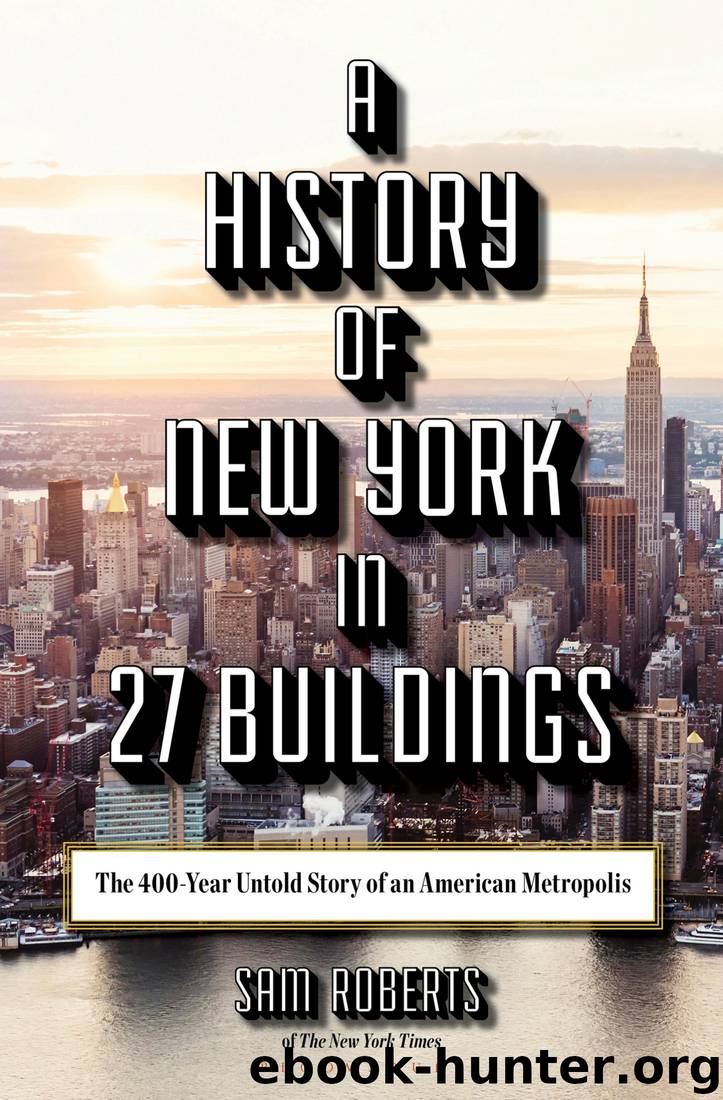A History of New York in 27 Buildings by Sam Roberts

Author:Sam Roberts
Language: eng
Format: epub
Publisher: Bloomsbury Publishing
The Flatiron was greeted with mixed reviews at best, but has become one of the most photographed and beloved buildings in New York. (George Samoladas)
16
THE LYCEUM THEATER
The opening-night audience at the Lyceum was as infatuated with the theater itself as it was with the performance. It was another Frohman hit. (Courtesy of the Shubert Archive, 1903)
Justin Huntly McCarthy’s The Proud Prince opened in New York on Monday night, November 3, 1903, starring the dashing E. H. Sothern as Robert the Bad, the king of the Two Sicilies. The play itself, which critics had denounced as so prurient that it was nearly banned in Detroit, barely merited a mention in the next morning’s New York Times review. Instead, the Times critic focused on the brand-new theater where the play debuted, the Lyceum, on West Forty-Fifth Street, and the first-night celebrity audience. The enthusiastic crowd applauded the production and the performers, but their primary motivation that night was probably to personally evaluate the latest luminary in the Frohman family’s constellation of spellbinding playhouses.
The Frohmans were once the most prolific producers on Broadway. They were also among the pioneers who heralded the uptown progression of the Theater District. And after more than a century of redevelopment, mergers and acquisitions, and egos that demanded marquee recognition, the Lyceum Theater remains the oldest commercial playhouse in New York City still serving the legitimate stage and among the last to retain its original name.
Originally, New York was not much of a theatrical town. In 1699, Richard Hunter petitioned the governor for a license to perform plays, but in 1709 the Common Council sternly banned “play acting and prize fighting.” The Dutch Reformed Church had not encouraged frippery (as late as 1764, when the Reverend Dr. Archibald Laidlie arrived as the church’s first English-language preacher, he sermonized against the “luxurious abominations which sometimes kept the families awake till nine o’clock at night”). In 1732, a London troupe began performing on the second floor of a building near Maiden Lane and Pearl Street, and by the end of the eighteenth century, New York notables were regularly attending performances at several venues, including the John Street Theater. President George Washington, who enjoyed racy (by eighteenth-century standards) comedies, was a regular theatergoer when the nation’s capital was in New York. A German air, “The President’s March,” was typically played when he entered. By the early nineteenth century, theaters like Niblo’s Garden at Broadway near Prince Street, which could seat more than one thousand, were hosting vaudeville, farces, and, later, musical comedy and opera.
In 1849, more drama took place offstage than on during competing productions of Macbeth. Edwin Forrest, an American who had launched his acting career in blackface, was booed when he played the part in London, a reception he blamed on professional jealously by the British tragedian William Charles Macready. Forrest retaliated by hissing a few weeks later when Macready was playing Macbeth in Edinburgh. On May 10, 1849, the rivalry erupted in class warfare in New York. An
Download
This site does not store any files on its server. We only index and link to content provided by other sites. Please contact the content providers to delete copyright contents if any and email us, we'll remove relevant links or contents immediately.
| Africa | Americas |
| Arctic & Antarctica | Asia |
| Australia & Oceania | Europe |
| Middle East | Russia |
| United States | World |
| Ancient Civilizations | Military |
| Historical Study & Educational Resources |
In Cold Blood by Truman Capote(3310)
The Innovators: How a Group of Hackers, Geniuses, and Geeks Created the Digital Revolution by Walter Isaacson(2842)
Steve Jobs by Walter Isaacson(2835)
All the President's Men by Carl Bernstein & Bob Woodward(2327)
Lonely Planet New York City by Lonely Planet(2171)
And the Band Played On by Randy Shilts(2129)
The Room Where It Happened by John Bolton;(2103)
The Poisoner's Handbook by Deborah Blum(2091)
The Murder of Marilyn Monroe by Jay Margolis(2058)
The Innovators by Walter Isaacson(2055)
Lincoln by David Herbert Donald(1944)
A Colony in a Nation by Chris Hayes(1880)
Under the Banner of Heaven: A Story of Violent Faith by Jon Krakauer(1748)
Amelia Earhart by Doris L. Rich(1648)
The Unsettlers by Mark Sundeen(1645)
Birdmen by Lawrence Goldstone(1619)
Being George Washington by Beck Glenn(1617)
Dirt by Bill Buford(1611)
Zeitoun by Dave Eggers(1592)
